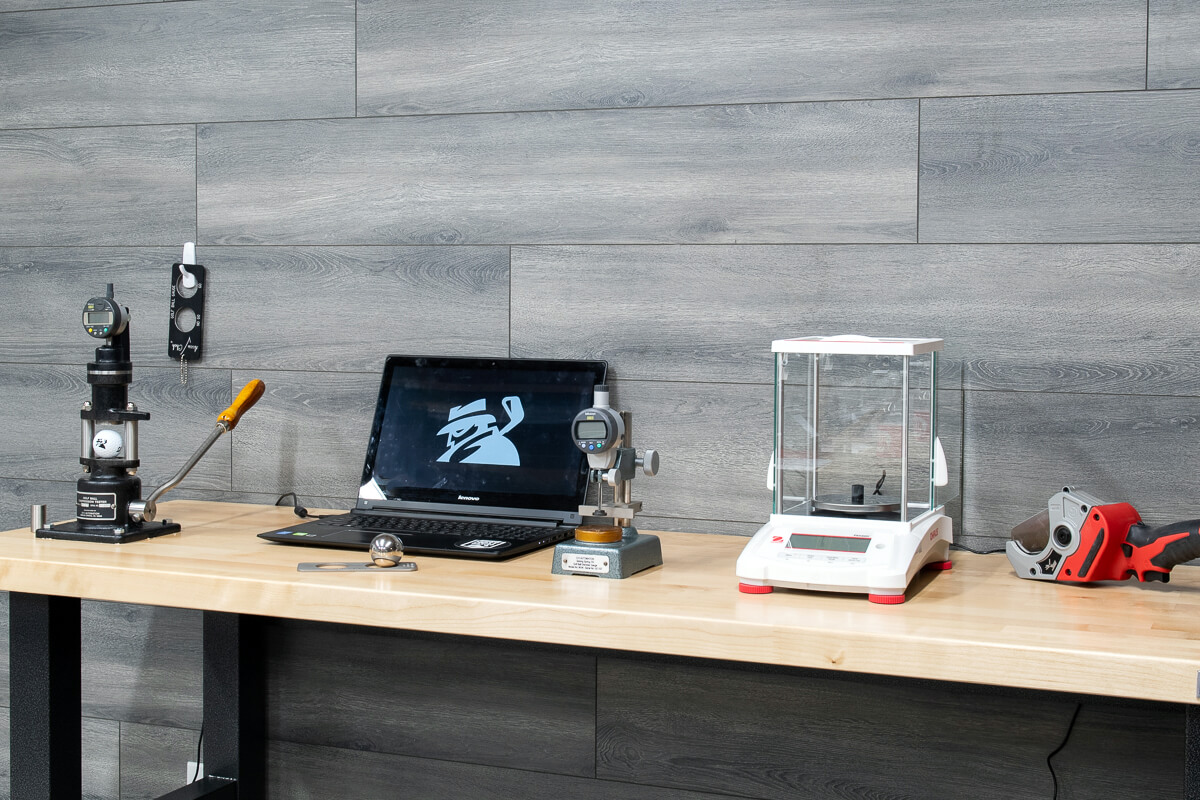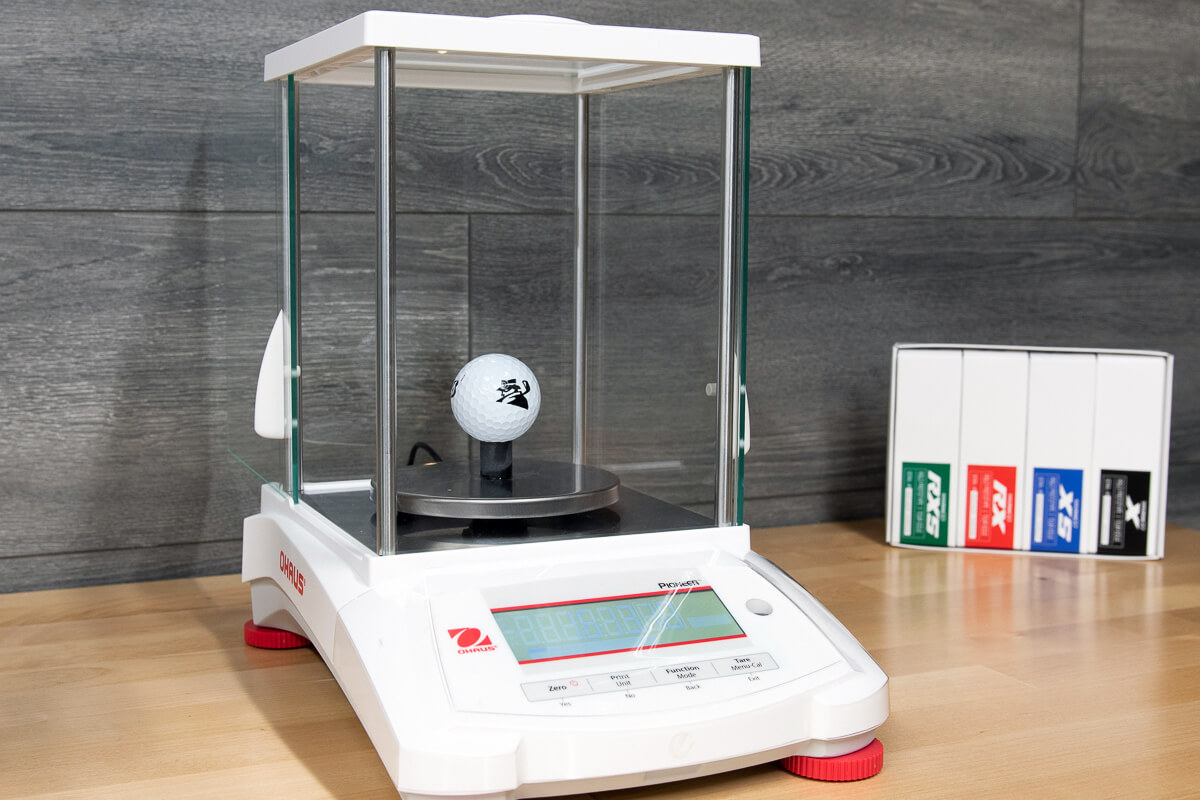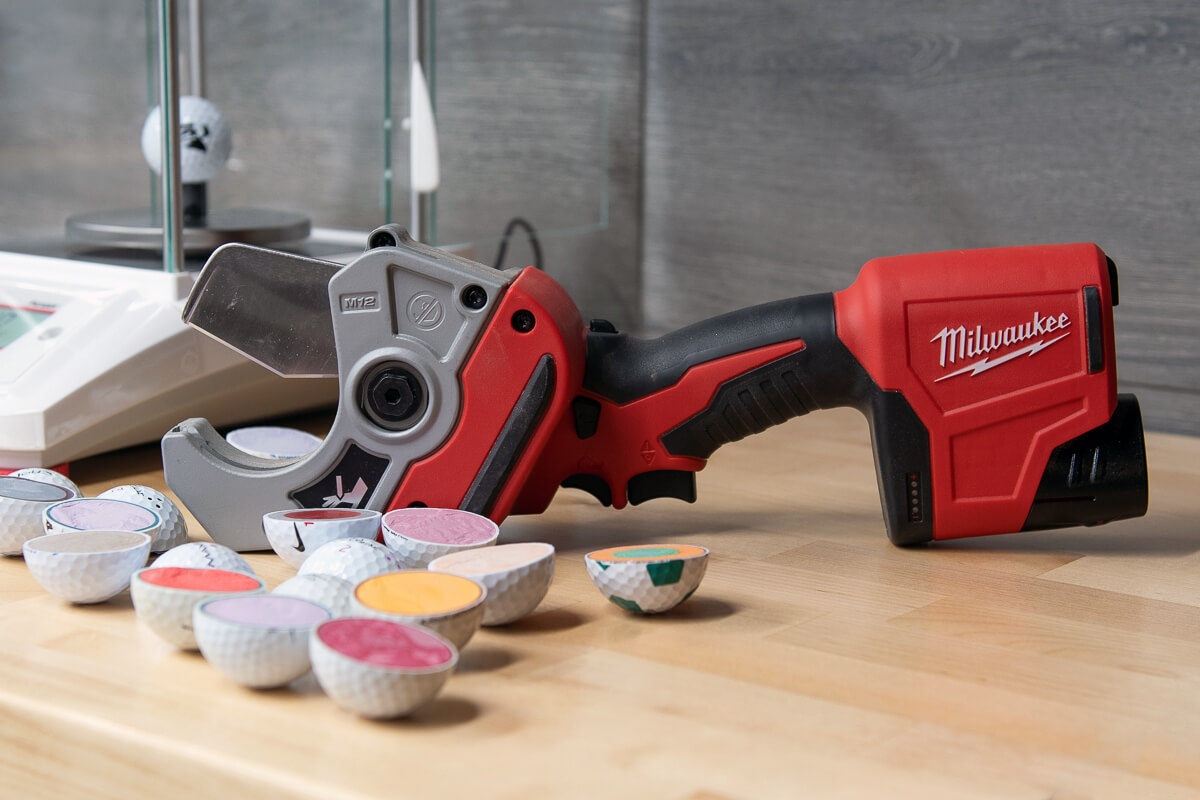About MyGolfSpy Ball Lab Testing
What is MyGolfSpy Ball Lab?
MyGolfSpy Ball Lab was conceived as a means to quantify the quality and consistency of golf balls. As the expression goes, it’s what’s on the inside that counts.
By shining a light on quality, we can give golfers better insight into the hidden realities of the golf balls on the market today. We hope you will use Ball Lab as your starting point as you search for your perfect golf ball.
MyGolfSpy Ball Lab – Two Key Metrics
Ball Lab reports include two basic metrics.
Consistency
For each of our three bench measurements, we provide a consistency value ranging from Excellent to Poor. As you would expect, the majority of the balls we test fall within the Average range.
True Price
Our True Price metric seeks to quantify the true cost of a dozen “good” balls of each model tested.
In simple terms, a good ball is one that’s consistent with the other balls in the sample set, free from significant manufacturing defects and conforms to the USGA’s size and weight rules.
Think of it this way: Is that $30-a-dozen ball truly a great value if you need to buy two dozen to get 12 good balls?
Here’s the real rub: It’s nearly impossible for golfers to know which balls in any given box are bad. You get what you get, but sometimes you should get upset.
True Price will help golfers better understand how much a given ball really costs … and how much performance it might be costing them.
The MyGolfSpy Ball Lab Process
Procurement
We purchase three dozen of each ball model we test at retail. When possible, we source balls from different vendors and at different times. By sampling across multiple batches, we can obtain a more comprehensive picture of quality and consistency.
Seam Identification and Marking
For each ball, we identify the true seam/parting line of the cover. Four measurement points (two on the seam approximately 90 degrees apart, one on the pole and one offset between the seam and pole) are marked for reference during the measurement process.
Incubation
To maintain consistent test conditions, balls are placed in an incubator for at least 24 hours before being measured.
Our test conditions are 70 degrees Fahrenheit (+/- two degrees) with relative humidity of 50 percent (+/- three percent).
During the test process, balls are never out of the incubator for longer than 20 minutes at a time.
MyGolfSpy Ball Lab Testing
The Ball Lab test process itself consists of four parts.
Compression
Compression measurements for MyGolfSpy Ball Lab are taken with a Model 55-M Golf Ball Compression Tester from OK Automation. The compression gauge is recalibrated before the start of each testing session.
To avoid input errors, a keyboard gauge interface device is used to transfer data directly from the gauge to the computer.
Effectively, we have two compression metrics.
The average of our three measurements (two seam, one pole) is considered to be the compression for each ball. This is the number we publish in our compression charts.
If the average compression for any given ball varies significantly from the median compression for the set, it is deemed “bad.”
The second metric looks at the consistency of compression across the three points measured on each ball.
When there is significant variation across those three points, that ball is also deemed “bad.”
Our Compression Consistency rating is based on an aggregation of the two compression metrics.
Weight
Weight (ounces) measurements for MyGolfSpy Ball Lab are taken using an Ohaus Pioneer PX 323 Precision Electronic Balance. To avoid input errors, the scale’s PC interface is used to transfer values directly to the computer.
With an allowance for a small margin of error, a ball is deemed “bad” when its weight exceeds the USGA’s allowable limit of 1.620 ounces.
In addition to the weight of each ball, we also track the consistency of weight across the entire sample.
Diameter
Diameter measurements for MyGolfSpy Ball Lab are taken with a Mitutoyo ABSOLUTE Digital Indicator (Model 547-476B) outfitted with a custom machined radiused base and indicator tip. The custom tooling straddles the dimples and helps prevent measurement errors.
The gauge is calibrated before each dozen balls are measured.
Diameter measurements are taken at four points on each golf ball (two seam, one pole, one off-seam). Our diameter measurement represents the average of the four points measured.
When there is significant variation between points, the ball is measured again to ensure accuracy.
Using a generous standard, we compare the average of our seam measurements to our pole measurement to determine if a ball is round. A ball that is not round is deemed “bad.”
In addition to average size and roundness, we check each ball for adherence to USGA rules. The “Ball Track” procedure is performed with each ball using a custom made 1.680-inch Class X No-Go Gauge.
A ball that fails the USGA Ball Track test is deemed “bad.”
Visual Inspection
In addition to our gauge tests, MyGolfSpy Ball Lab includes a visual inspection of each ball in the set.
We use a generous standard in grading physical defects. The golf ball always gets the benefit of the doubt. As part of the process, balls are cut into three pieces.
Cover Defects – Our approach is to look for cover defects that an average golfer is likely to notice and take issue with. To that end, minor defects such as pin marks, dimple artifacts and other small irregularities are ignored.
Balls with major defects like missing dimples, significant surface impressions, tool marks or scratched/scuffed covers are considered “bad.”
Core Centeredness – The object of our centeredness test is not to put the ball under a microscope, count millimeters and otherwise nitpick. The goal is to identify irregularities that are likely to have meaningful performance implications.
While we note any core that is visibly off-center to the naked eye, a ball is only deemed “bad” when the core is significantly off-center.
Layer Concentricity and Thickness – Irregularities in the mantle and cover layers can have a quantifiable performance impact. Once again, we note visible but relatively minor issues. A ball is only deemed “bad” when there is a significant inconsistency in the thickness of the mantle or cover layers.
Typically, these are balls where one or more of the layers is significantly thicker on one side of the ball than the other.
Core Color Consistency – Small variations in color are ignored. What we’re looking for are irregularities that would indicate an inconsistent mixture or other abnormalities in the core itself.
A ball is deemed “bad” when the appearance of the core is significantly different from others in the sample. In most cases, balls with this particular defect will have already been deemed “bad” for other reasons.
About the MyGolfSpy Ball Lab Reports
The MyGolfSpy Ball Lab published reports include individual consistency ratings for compression, diameter and weight. We also summarize the findings of our visual inspection.
Finally, we look at the total number of “bad” balls within the sample set and use it at the basis for our True Price metric. You can think of True Price as a “bang for the buck” metric. It’s a repetitive estimate of how much you would have to spend to get one dozen “good” balls for every model we test.
We want to hear from you
If you have any suggestions or requests for MyGolfSpy Ball Lab, please leave a comment on an individual Ball Lab report.

















